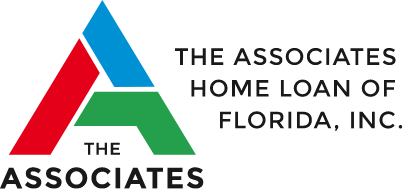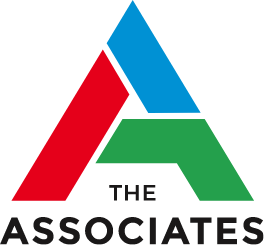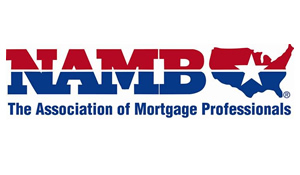
What Is a Bridge Loan? Everything You Need to Know
If you are looking to move, you may be facing a problem that many homeowners face. You come across the property of your dreams, only to have trouble selling your current home. It’s a cart-before-the-horse dilemma — how are you supposed to buy the new property without the money from your sale?
Enter bridge loans. Our guide will tell you everything you need to know about this type of financing. Read on to learn more about the terms, the pros and cons, and whether you can apply.
What Is a Bridge Loan?
A bridge loan is a type of real estate financing. Borrowers can use the money to buy a new home before the final sale of their current home. As the name suggests, it essentially acts as a “bridge” between your two housing periods.
Terms of a Bridge Loan
The terms of your bridge loan will vary depending on your circumstances and which lender you use. If you want to see what your terms might look like, contact Associates Home Loan today.
For now, let’s discuss a few of the most important characteristics of bridge loans.
Length of the Term
This type of financing is meant to provide a short-term solution for those buying a new home. Thus, there are no long-term options available.
Most terms have repayment periods of 12 months or less. If you need financing with a longer repayment option, contact Associates Home Loan to explore other options like home equity loans.
Loan Value
When considering a bridge loan, know that lenders abide by different standards when determining how much you can borrow.
For instance, some will let you borrow 80% of the combined value of the equity you have in your current home and the property you want to buy. Others may only let you borrow a percentage of your mortgage that you’ve paid off.
Interest Rates
While interest rates for bridge loans vary, they’re almost always higher than those of traditional mortgages. Expect to pay anywhere from 8 to 10% of the loan’s value.
Other Fees
On top of interest rates, you’ll likely have to pay an origination fee. These fees can be quite high as they average around 3% of the loan’s value.
Some lenders also charge servicing fees. All of these fees can sneak up on you, so make sure you understand the term’s fees before signing anything.
Repayments
A lender like Associates Home Loan will work with you to establish a reasonable repayment plan.
In many cases, the borrower will make monthly payments plus interest until the end of the term. At the end of the term, they’ll pay a final balloon payment to cover the rest of the amount due. Note that the lack of repayment penalties encourages you to pay off the amount due early (if possible).
Sometimes, you won’t have to start making payments until several months after you secure the loan.
When a Bridge Loan Is Appropriate
Because bridge loans come with high interest rates and stricter borrower requirements, you may look to other financing options first.
In some cases, however, bridge loans might be just what you need to buy a new property.
Borrowers often turn to this type of financing when they want to buy a new house but have trouble selling their current home. Lenders can approve you in as little as 1-2 weeks, and you’ll get the money you need to close the deal. Having fast access to cash is especially beneficial in competitive housing markets.
Bridge loans can also help you secure a home, as you can present an offer without a financing contingency. Sellers will likely give preference to your offer over others who will only buy if they can sell their homes.
Additionally, you can use this type of financing to cover part of the cost of your new home. Say you have enough to pay for the majority of the down payment. However, you need a little extra to cover the rest—plus closing costs. Borrowing a smaller amount will make repayment that much easier.
The Risks of Bridge Loans
Knowing “What is a bridge loan?” comes in handy, but you should also understand its risks.
For instance, consider that many people depend on the sale of their current home to pay off the full amount. If you can’t sell your home fast, you’ll be stuck paying your loan, the mortgage on your old home, and the mortgage on your new home.
Additionally, if you default on payments, the lender is allowed to foreclose on your old home as it acts as collateral.
Therefore, it’s important to determine if you can make monthly payments plus interest. Do some calculations and think about your current budget. You should also consider what you would do on the off chance that you can’t sell your home before the term is up.
Who Can Get a Bridge Loan?
To apply for this kind of financing, you need to have at least 20% equity in your current home. Additionally, lenders prefer borrowers who have good credit and debt-to-income ratios.
If you’re in the process of rebuilding your credit, a lender like Associates Home Loan can help. Our team specializes in helping those with financial difficulties borrow the money they need.
The Bottom Line — Should You Apply for a Bridge Loan?
We’ve covered “What is a bridge loan?” and explained some of the terms, but it’s up to you to determine if this kind of financing is right for you.
It’s useful, as you’ll get the money you need to purchase a new home before selling your current property. However, it’s important to understand the fine print.
If you need more information before making this big decision, contact Associates Home Loan today to talk to an expert.
Recent Posts
Hard Money Loan Requirements: The Basics and How To Qualify
Hard money loans offer a unique financing avenue for individuals and investors seeking swift access to capital, especially when traditional lending avenues are not feasible. The expertise of lenders in approving hard money loans allowsRead More
What is a Private Mortgage? Your Guide to Private Mortgage Lending
When you need money for a project, investment, or renovation, you need it quickly and on your own flexible terms. At The Associates Home Loan, we work to create a seamless loan experience, securing loanRead More
Private Lender vs. Bank Mortgage: Everything You Need to Know
Are you ready to buy a new home but can't get through the strict lending requirements of a conventional mortgage? Or maybe you're a self-employed entrepreneur, have less than stellar credit, or are venturing intoRead More









